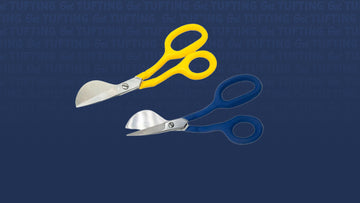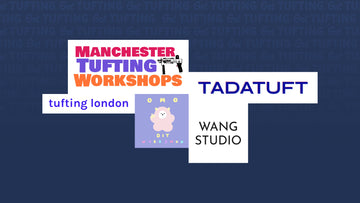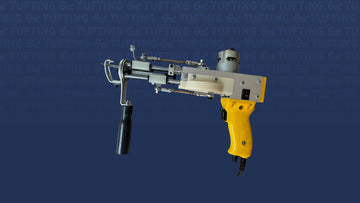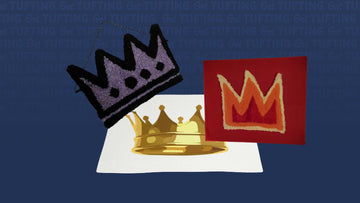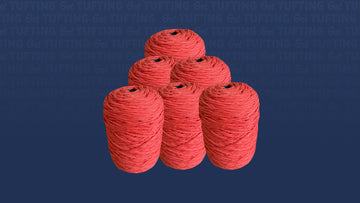What are those strange-looking scissors for? I'll show you everything you need to know about duckbill scissors, why you need them in your tufting toolkit, and which products I recommend.
When I was working on my first tufting project, I was cutting with regular scissors and accidentally cut some of my cloth.
I wish I'd known about duckbill scissors back then because using that frequently misunderstood tool would have prevented that minor mishap and saved me the time of having to go back and fix it.
You don't want strings hanging out, jagged edges, or uneven layers when you're tufting because they will make your project look terrible on the back. Using regular scissors increases the likelihood of one of these things happening, so it's a good thing there's a product for this purpose!
What exactly are duckbill scissors?
Duckbill scissors are a unique pair of scissors with a wide flat blade and a slightly angled handle that lifts your hand away from the fabric while you cut.
The paddle blade (also known as the duckbill blade) keeps you from cutting the the good fabric. At the same time, the angled handle makes it easier to hold the scissors while the blade is completely flat on the material. Duckbill scissors allow you to cut the fabric very close to the cloth, which is why they are commonly used in tufting.
"What's in a name?" What we call a rose by any other name smells just as sweet." Duckbill scissors may sound like a funny name (and it is), but I've also heard these scissors referred to as "appliqué scissors" and "pelican scissors." The name isn't the only amusing aspect of these scissors.
You've seen how they're shaped. The paddle blade alone is enough to make you take a second look. It doesn't matter what you call this odd-looking tool because these scissors are extremely useful.
Duckbill Scissors: How to use them
As adults, we often take the ability to cut with scissors for granted. That's something we learned in kindergarten, right?
These are, understandably, some of the most misunderstood scissors! They cannot be used in the same way as regular scissors, and they should not be used in that manner because their purpose is very different.
The wide paddle blade slides under a layer of fabric to push it up and away, allowing the sharp cutting blade on top to make a clean and close cut. If you are a right-handed sewer, you would cut around your project counterclockwise. It would be clockwise for left-handed sewers.
Are duckbill scissors available for left-handed people?
Duckbill scissors are available for left-handed people. Unfortunately, the duckbill scissors we sell will not work with either dominant hand, so left-handed duckbill scissors must be purchased separately.
How to store duckbill scissors
Lint accumulates quickly on the wide paddle blade of duckbill scissors, so clean them after each use before storing them. As a result, lint must be removed on a regular basis. When storing scissors, keep them completely closed.
Duckbill scissors may be more difficult to store than regular scissors due to their unusual shape and angles. To be honest, it will all depend on how you have your tufting supply organisational system set up.
You may be able to store your duckbill scissors alongside your other cutting tools, or you may need to store them separately, such as in a sewing box.
Can duckbill scissors be sharpened?
Duckbill scissors can be sharpened.
Even if you're careful, scissors will dull over time and use. Cheaper scissors tend to dull faster and more easily than more expensive, high-end scissors.
Most duckbill scissors are inexpensive; however, they are not commonly used for cutting anything other than fabric or thread. Even so, if your duckbill scissors become dull, try sharpening them rather than throwing them away.
Where should you sharpen your scissors? If you don't have a sharpening tool, contact a local hairdresser or dog groomer.
